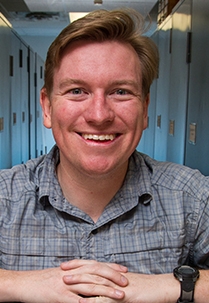
His work shows a cuckoo bee (Nomada sp.) and an Anthophora bee sharing honey on a twig. The image appears as an inset for the month of September.
Wright collected the bees at his field site in Hemet Calif., the day before. "I took them to my studio to try and get some images in flight and to bolster my files of native bee species," he related. "I often feed my subjects a little honey as I photograph them over the course of a day or two before releasing them back where I found them. They also tend to offer nice shots when they sit still drinking, so I figured I would try to fit two bees on a twig that I had around, and see if they would offer a picture."
"I managed a number of nice shots of them sharing a drink before letting them go their separate ways. Once spring starts back up in full, I'm hoping to recreate this shot with a half-dozen or more native bee species all on the same branch at the same time to show off the incredible diversity of native bees in California."
"I was so thrilled to have my image accepted to the ESA calendar, which always showcases incredible arthropod images!"
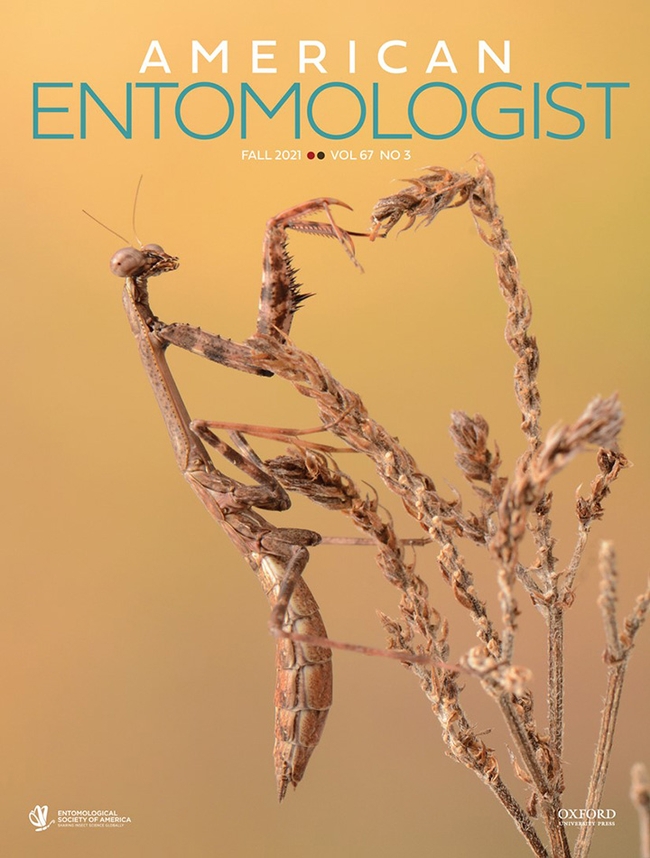
This is his first image selected for the international calendar, although he's submitted a few images over the last several years. He was also honored to have one of his arthropod images selected for the cover of the fall edition of the American Entomologist.
Wright, who holds a bachelor's degree in evolution, ecology and biodiversity from UC Davis in 2008 and a master's degree in evolution, ecology and behavior at the University of Texas, Austin, in 2015, began pursuing photography as a hobby in 2008, using a single lens reflex camera. Today he specializes in macro and wildlife photography but also enjoys "photographing people and, especially, the intersection of people and science."
Wright's hobby has grown into "a passion for documenting the species and behaviors I find during field work or on my many expeditions to observe species and their habitats around the country and the globe."
You can follow Ian Wright on the Internet:
- Website: https://ianmwright.zenfolio.com/
- Facebook: https://www.facebook.com/ian.wright.549
- Twitter: https://twitter.com/ianmwright86
- Instagram: @ianmwright86 and @tinyspheres
The World of Insects Calendar is known for its striking, world-class photography of arthropods. The 2022 calendar drew more than 740 entries from more than 180 photographers from around the globe. The cover image depicts newly hatched brown marmorated stink bug nymphs (Halyomorpha halys), photographed by Tom Astle of Sherman Oaks, Calif.
ESA seeks photos of "the highest aesthetic and technical quality," and issues a call for photos early in the year for the following year's calendar. Photographers of all backgrounds, areas of expertise, career stage, and geographic location submit photos.
This year ESA also published an "Arthropod Photo of the Week" from the submitted photos. (Follow "Arthropod Photo of the Week" via the #arthropodPOTW hashtag on Twitter, Facebook, and Instagram.)
ESA, founded in 1889, serves the professional and scientific needs of entomologists and individuals in related disciplines throughout the world. Its 7000 members are affiliated with educational institutions, health agencies, private industry, and government. They include teachers, extension service personnel, administrators, marketing representatives, research technicians, consultants, students, pest management professionals, and hobbyists.
The general public can order the 2022 calendar online by accessing this link. The cost per calendar is $10 for ESA members and $14 or non-members, with decreased costs for multiple orders.
Attached Images:
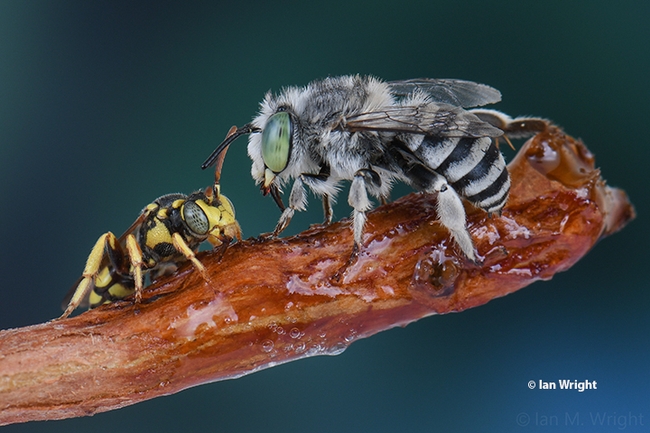
In this award-winning image, a cuckoo bee, Nomada sp.(left), and an Anthophora bee share honey on a twig. The work of Ian Wright, it was selected as a September (inset) image in the ESA's World of Insects calendar. (Copyrighted Photo by Ian Wright)
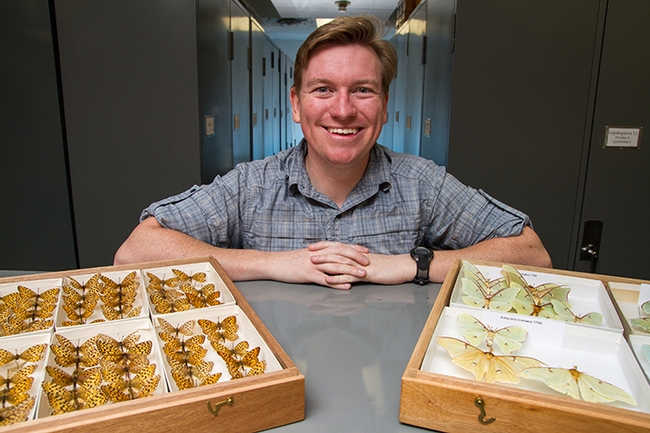
Ian Wright, a UC Davis alumnus and a research specialist at UC Riverside, is shown here with some of his winged specimens.
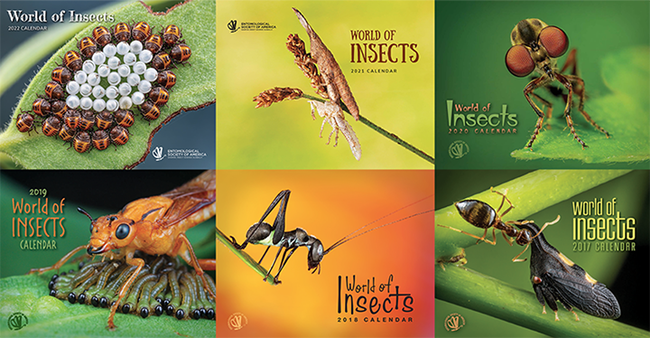
Covers of some of the ESA calendars, from 2017 to 2022.